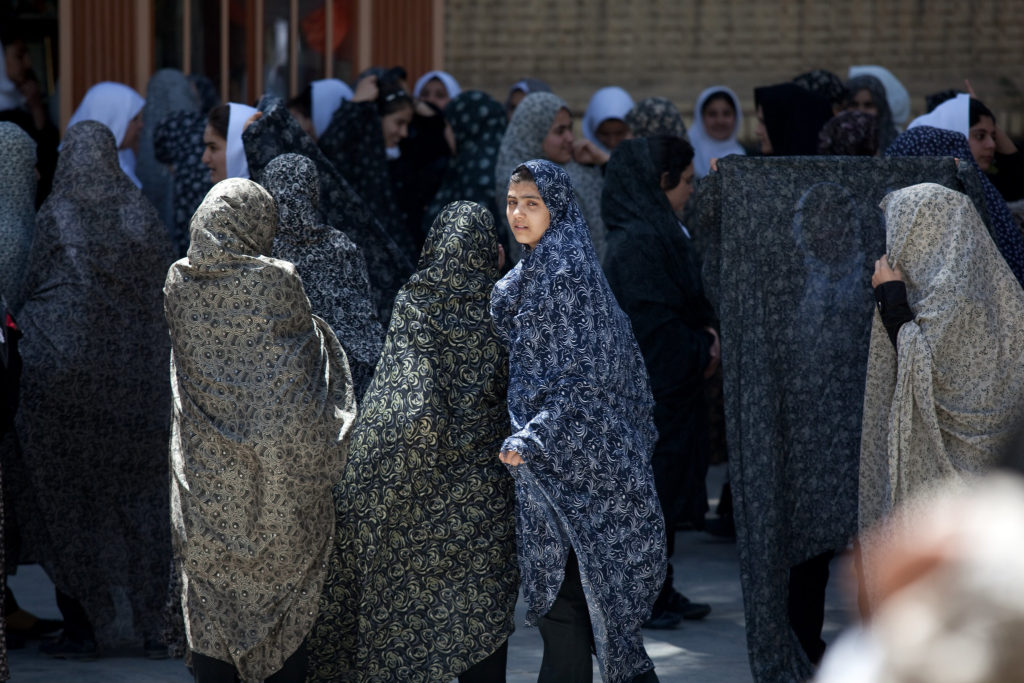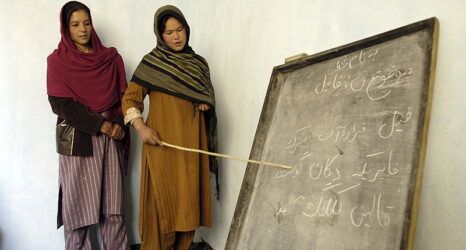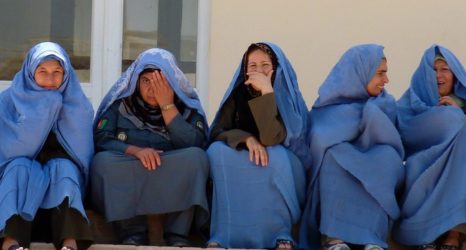This post is the first in a four-part series. Come back next week to read more!
In March of this year, the Taliban executed Masooma, a pregnant 25-year-old woman who had offended a local commander by calling the militia’s war against security forces unjust in a private conversation.
Masooma’s murder didn’t make headlines in the West, even though the Trump administration was, at the same time, plodding forward with peace talks with the Taliban. These U.S.-Taliban talks, part of the Trump administration’s exit strategy for U.S. troops in Afghanistan, have been viewed by many as an outrage since neither women nor representatives from the democratically elected Afghan government were invited to the negotiating table. Since it was passed by the U.S. Senate in 2017, the Women, Peace and Security Act has required that all U.S. peace negotiations urge and promote women’s participation. Excluding Afghan women in the first peace talks to occur since the bill’s passage is not just disrespectful and damaging—it ignores the law.

Their exclusion—and the prospect of allowing the Taliban a key role in the governance of their country—has galvanized Afghan women around equal rights. In social media campaigns organized by Afghan women activists, politicians and journalists, millions of women are refusing publicly and vehemently to return to the oppressive Taliban rule.
Using#AfghanWomenWillNotGoBack and #MyRedLine, women are explicit about the gains they refuse to abandon.
Few could forget the half-decade of Taliban control in the late ’90s. When the group emerged from a chaotic civil war in Afghanistan to take control of the country, they banned the education of women and girls. Women could not work, nor could they move through public spaces without a male guardian. Though some had previously worn miniskirts, they were now required to cover from forehead to ankle. The list of punishable offenses was exhausting and demeaning: laughing in public, wearing heels that clicked, dressing in bright colors. Harsh punishments ranged from lashes to the ankles to cutting off the fingertips of those who dared to lacquer their nails. Afghans witnessed women beaten in town squares or executed on the dusty field of Kabul’s sports stadium. The image of burka-clad Afghan women circulated global media as a symbol of the ultimate patriarchy.
The Taliban’s stifling regime drove Afghans out of the country, creating mil- lions of refugees. My relatives fled the misogynistic edicts that denied their daughters a basic education and access to health care. The ousting of the Taliban in 2001 and the end of the gender apartheid were victories for women and girls in Afghanistan and marked a global commitment to rid the country of extremists and terrorists.
Today, the Taliban continue “bombing public places, killing innocent civil- ians and [Afghan] forces—who have put their lives at the forefront of the fight against international terrorism,” warns Afghan Ambassador to the U.S. Roya Rahmani, the first woman diplomat to hold that post. “They … hinder [our] potential for development and prosperity by making Afghanistan an unsafe place for investors, denying our people their very essential right to living in peace and other human rights.”
Despite this, the Trump administration has tasked U.S. special envoy Zalmay Khalilzad, a neoconservative strategist whose fingerprints are all over the past three decades of U.S. foreign policy and Afghan history, with engaging in talks with the Taliban.

This piece is excerpted from a feature in the Summer 2019 issue of Ms.
To fuel our critical reporting on global women’s rights and snag a copy before it hits newsstands, become a member today!
To read more from the issue, check out the excerpt archive.





